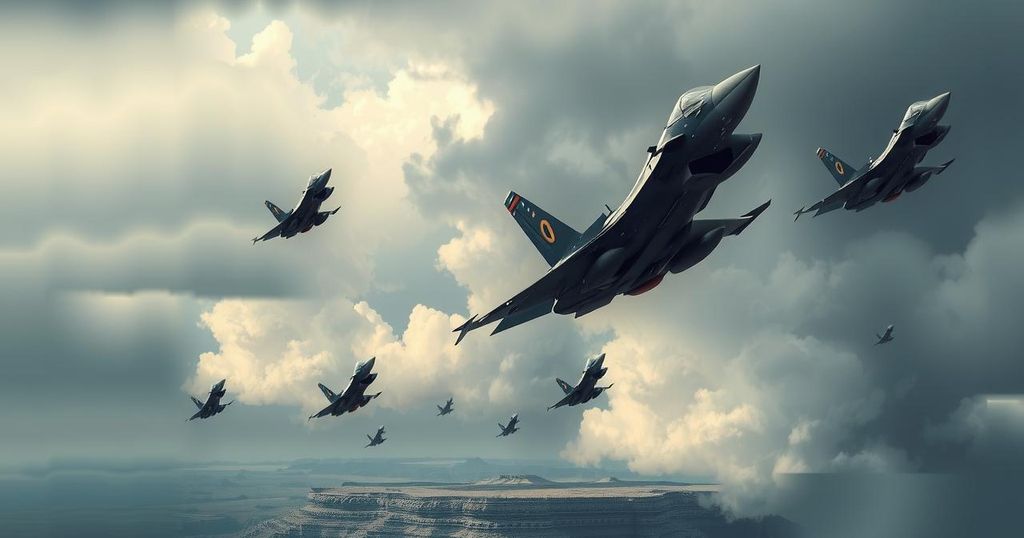Trump Initiates Strikes Against Houthi Militants, Warning Iran

President Trump has ordered large-scale military strikes against Houthi militants in Yemen as a response to attacks threatening U.S. interests in the Red Sea, signaling a warning to Iran. The offensive targets the Houthis’ military infrastructure and aims to curb their capacity to target U.S. assets. This operation forms part of a broader strategy of increased military action against adversaries while seeking diplomatic engagement with Iran regarding its nuclear program.
On a Saturday marked by significant military escalation, President Donald Trump announced the initiation of large-scale strikes against Houthi militants in Yemen. This decisive offensive aimed to target the group’s military capabilities, including their radars and drone launch sites. The operation is a reaction to recent Houthi attacks that threaten maritime traffic and U.S. personnel in the Red Sea, and it serves as a warning to Iran, the Houthis’ primary supporter.
In a social media statement, President Trump declared, “The Houthi attack on American vessels will not be tolerated. We will use overwhelming lethal force until we have achieved our objective.” He explicitly urged Iran to cease its support for the Houthi militants, threatening to hold Tehran accountable for its backing of terrorist activities.
The Houthis have conducted operations in solidarity with Hamas, which has escalated tensions in the region following its attacks on Israel. With over 50,000 lives lost in recent conflicts, primarily amongst Palestinians, the situation remains precarious. Trump criticized the previous administration’s efforts to curb the Houthis’ capabilities as “pathetically weak.”
Despite a temporary lull in Houthi attacks due to a fragile ceasefire with Hamas, Houthi leaders have signaled their readiness to resume military activities should the truce fail. Reports from Yemen indicate significant military activity, with smoke rising over sites associated with Houthi leadership in the capital, Sanaa. Activists have captured images of the ongoing strikes.
U.S. Central Command has confirmed that these military actions aim to safeguard American interests and restore freedom of navigation in the region. However, the command did not provide any assessments regarding potential civilian casualties. Notably, the strikes signify Trump’s dual strategy of exerting economic pressure on Iran while pursuing potential negotiations over its nuclear activities.
While Iran maintains that its nuclear program is peaceful, international agencies indicate an alarming increase in its highly enriched uranium production. In light of these developments, Israel has expressed unwavering intent to obstruct any Iranian nuclear advancements, planning potential actions against Iranian facilities.
The Trump administration has formally designated the Houthis as a foreign terrorist organization, attributing the designation to the group’s persistent aggression towards U.S. naval operations. It is recognized that while Iranian aid is substantial, the Houthis have developed their independent military capabilities and may react autonomously to regional pressures.
Experts highlight that the recent U.S. operations in Yemen appear more extensive than previous engagements with Houthi forces. The ongoing strikes have targeted several cities within Houthi-controlled territories, raising concerns about possible retaliatory actions against U.S. bases in regional allies such as the United Arab Emirates and Djibouti.
In summary, President Trump’s military actions against the Houthis serve as a strong warning to Iran and aim to degrade Houthi capabilities that threaten U.S. interests. The strikes illustrate a robust U.S. response to regional threats and embody a complex strategy of intensified military operations alongside diplomatic overtures regarding Iran’s nuclear program. As the situation unfolds, there are risks of increased hostilities and intricate regional dynamics at play.
Original Source: www.unionleader.com








